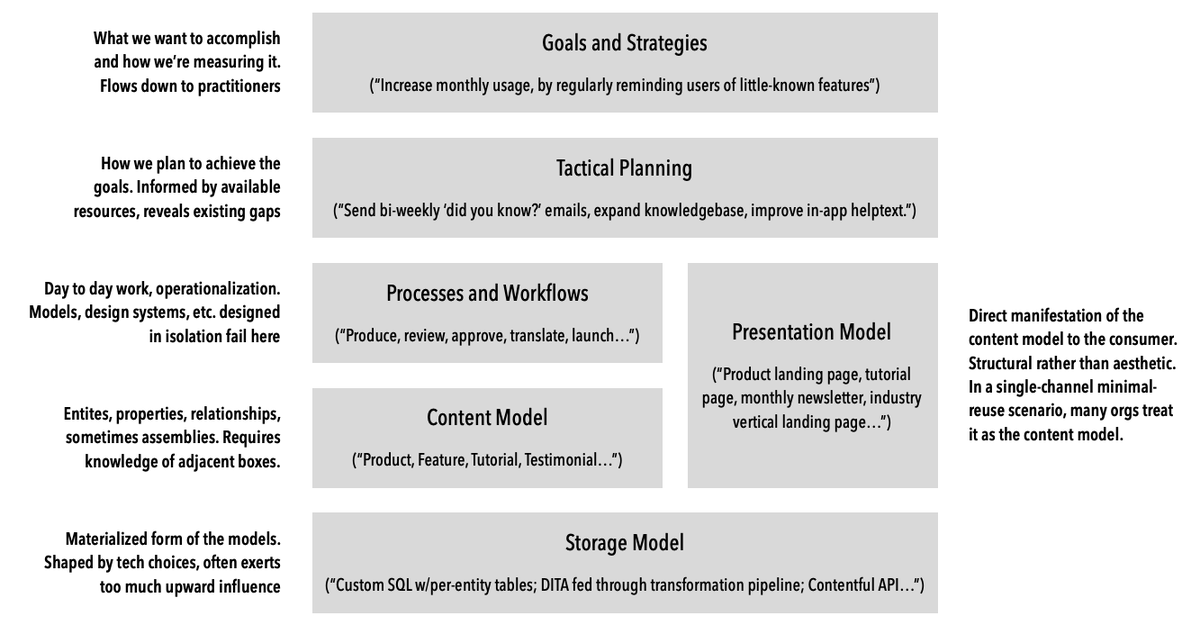Over in an email thread, I’ve been chatting with some fellow #contentstrategy folks and discussing a pretty core question: What Actually Is A Content Model?
Like… what information does it contain? What form does it take?
This is a question that I find really fascinating, because I tend towards the idea that there are lots of “models we use to understand our content”, and they are all useful at different times in different conversations. The challenge is getting them to agree with each other.
From the perspective of many design teams, a pattern library and a collection of page templates is effectively the content model. It’s the model they have for thinking about the content and they are unlikely to ever switch to ER diagrams or data dictionary spreadsheets.
That doesn’t make the pattern library THE content model, but it definitely makes it one view of it, the same way a satellite map of Chicago and a street map of Chicago are both legitimate and meaningful ways of communicating about ~the thing that is Chicago~
I think the traditional “boxes with nouns, and lines connecting them” model of an org or project’s content is critical for coordinating conversations between teams w/different perspectives. Not because it is inherently better but because it’s a useful lowest-common-denominator.
But to be accurate and useful as a common language, it has to be informed by, and combined with, lots of other perspectives that are captured in lots of other kinds of models. That’s the challenge.
I banged out a quick breakdown of where a traditional “content model” fits into the kinds of implementation projects I often consult on; it’s a critical, load-bearing element but only one piece of it.
